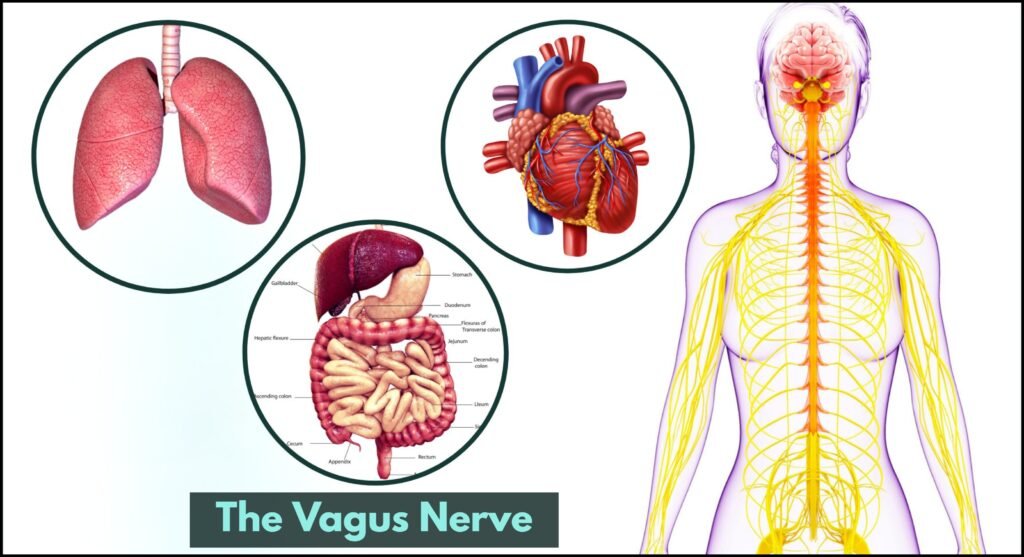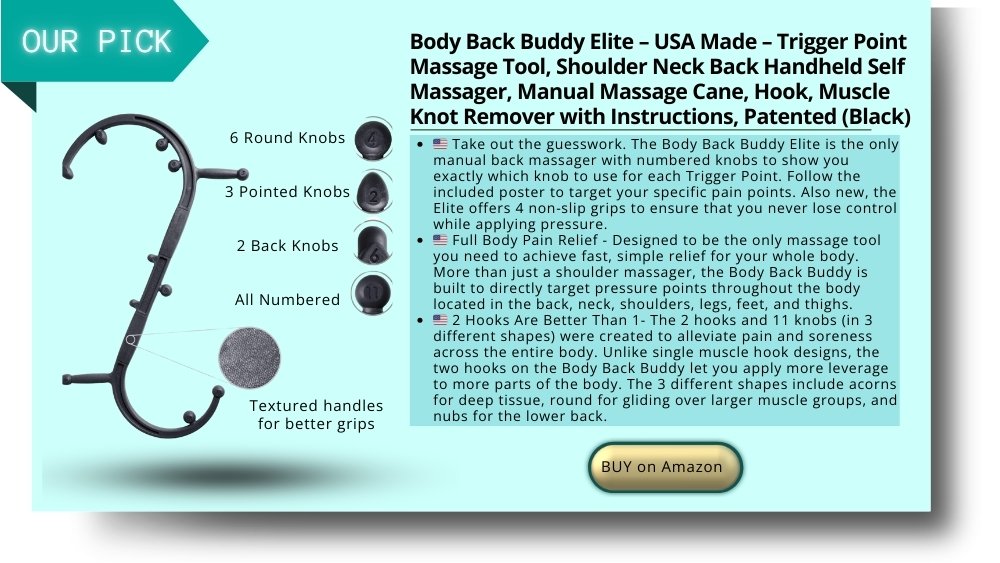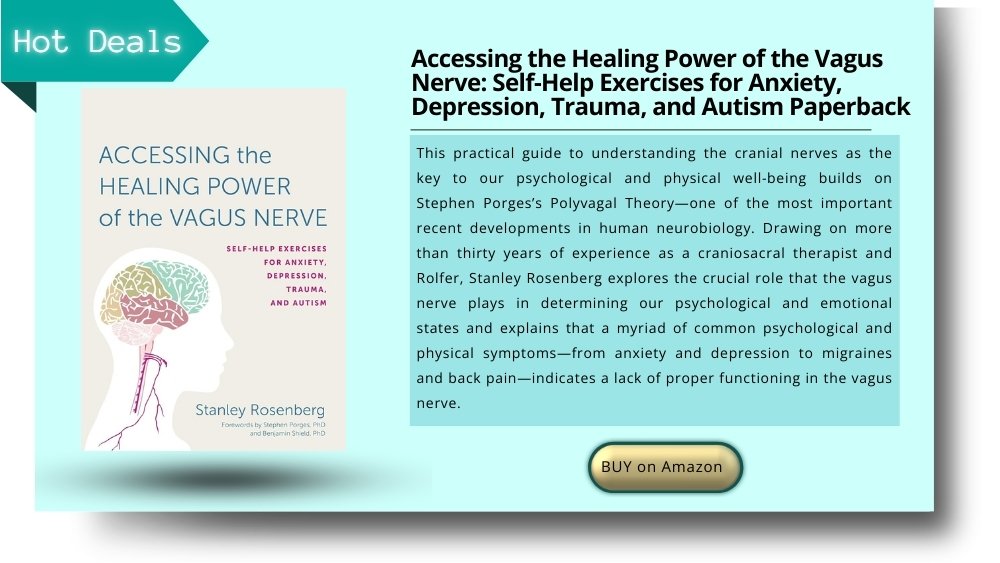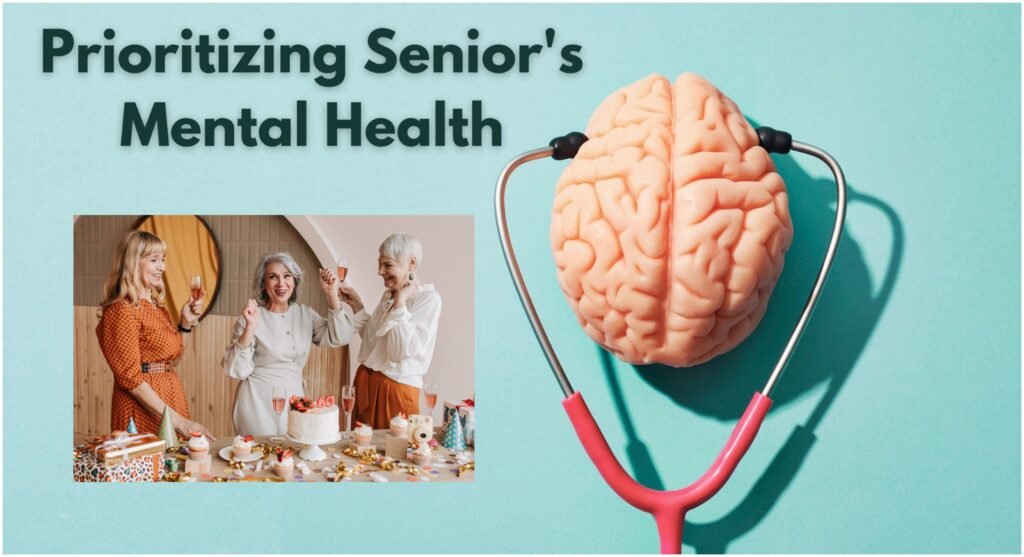Vagus Nerve Stimulation Techniques: 5 Important Health Facts

Last Updated on June 30, 2025 by Julian Espinosa
Have you ever wondered why some people seem to age more gracefully, maintaining their mental sharpness and emotional balance well into their golden years? The secret might lie in a remarkable nerve that acts as your body’s natural healing highway—the vagus nerve. This extraordinary communication pathway connects your brain to vital organs throughout your body, and recent breakthrough research shows that stimulating it could be a game-changer for seniors seeking to enhance their health and vitality.
Vagus nerve stimulation techniques offer a promising approach to addressing many challenges that come with aging, from cognitive concerns to sleep difficulties and chronic discomfort. Unlike complex medical interventions, many of these techniques can be as simple as learning proper breathing exercises or exploring gentle, non-invasive devices that work through your skin.
In this comprehensive guide, we’ll explore five evidence-based health facts about vagus nerve stimulation that could transform your approach to wellness. You’ll discover how this “wandering nerve” influences everything from your immune system to your mood, and learn practical techniques ranging from simple daily practices to advanced therapeutic options. Whether you’re looking to support your cognitive function, improve your sleep quality, or simply feel more balanced and energetic, understanding vagus nerve stimulation could open doors to a more vibrant, healthier you.
Ready to unlock the potential of your body’s own healing network? Let’s dive into the fascinating world of vagus nerve stimulation and discover how it might enhance your journey through life’s most rewarding years.

Unlocking the Vagus Nerve: Essential Health Facts for a Vibrant, Well-Balanced Life
The vagus nerve—aptly nicknamed the “wandering nerve”—truly functions as your body’s internal superhighway of health. Starting from your brainstem, it meanders gracefully through your neck, chest, and abdomen, maintaining constant communication with your heart, lungs, digestive organs, and more. Think of it as an experienced conductor orchestrating a symphony, ensuring your heartbeat, digestion, and breathing maintain perfect rhythm throughout your day.
For those in their retirement years, this “wandering nerve” becomes increasingly important in helping you stay relaxed, balanced, and ready to embrace life’s next adventures. Researchers have developed a fascinating technique called Vagus Nerve Stimulation, or VNS, which shows remarkable promise in supporting this natural conductor’s performance. VNS uses gentle electrical pulses to enhance the vagus nerve’s function, creating a balancing and calming effect throughout your body’s systems.
It’s like giving your body’s natural healing mechanisms a gentle boost, helping them work more effectively. Let’s explore five important discoveries about how Vagus Nerve Stimulation techniques can contribute to your health and overall sense of well-being. These methods range from simple, accessible approaches you can easily incorporate into your daily routine, to more comprehensive options that healthcare professionals might recommend based on your individual needs.
Prefer to listen rather than read?
The Role of Vagus Nerve in Senior Health
As you progress through life’s journey, your vagus nerve’s responsiveness may naturally begin to change. This gradual shift can affect various aspects of your health and well-being. The vagus nerve, scientifically known as the 10th cranial nerve, serves as an essential component of your parasympathetic nervous system and plays a crucial role in managing numerous bodily functions.
Understanding how this system works can illuminate why targeted interventions become increasingly valuable. The vagus nerve functions as an information collector, gathering data about your organs’ performance and relaying important messages between your brainstem and body. This sophisticated communication network helps regulate everything from your digestion and heart rate to your vocal abilities.
Recent research has shown that vagal nerve stimulation results in the release of beneficial catecholamines in brain regions crucial for memory, which can enhance synaptic plasticity and reduce inflammatory signaling. This discovery helps explain why healthcare professionals consider the vagus nerve an “information superhighway” with highly specific functions for each signal it carries.

As Dr. Kevin Tracey, a leading researcher in this field, explains, this complex network consists of thousands of individual fibers originating at the brainstem, traveling down both sides of your neck, and extending throughout your torso to reach various internal organs.
The vagus nerve’s influence on cognitive function becomes particularly significant for mature adults. This nerve releases important neurotransmitters that support memory and cognitive abilities. When vagus nerve function becomes less optimal, you might notice changes in your ability to concentrate, remember details, or think as clearly as before. Recognizing this connection empowers healthcare professionals to develop targeted treatments that stimulate the vagus nerve, potentially helping to support cognitive health and brain function.
Emotional well-being represents another crucial area where vagus nerve function plays a vital role. This nerve significantly influences mood regulation and emotional balance. When it doesn’t function optimally, mature adults may experience increased susceptibility to mood challenges or more pronounced symptoms of anxiety or depression.

Understanding the relationship between vagus nerve health and mental well-being enables healthcare professionals to create comprehensive strategies focusing on nerve stimulation to enhance emotional wellness. Recent studies indicate that transcutaneous vagus nerve stimulation may improve cognitive aging by providing symptom relief and decreasing the risk of future cognitive decline.
The vagus nerve also significantly impacts your immune system’s effectiveness. When this nerve becomes less responsive, your body’s immune response may weaken because the nerve plays a crucial role in regulating inflammation and immune function. Reduced vagus nerve activity can make it more challenging to fight off infections and diseases, potentially leading to more frequent or severe health challenges.
This connection also affects wound healing processes and overall resilience against illness. Healthcare professionals who understand this relationship can recommend specific measures to stimulate vagus nerve function, including targeted physical exercises, stress-reduction techniques, and other therapeutic approaches.
Benefits of Vagus Nerve Stimulation for Seniors
Vagus nerve stimulation techniques have garnered significant attention in recent medical research for their potential to offer numerous wellness benefits, particularly for mature adults seeking to enhance their overall quality of life and health span.
These evidence-based approaches extend far beyond simple cognitive support, although that remains a significant advantage. By exploring their comprehensive impact, we discover a world of possibilities that can positively influence multiple aspects of your daily life and long-term health.
Reducing Anxiety and Depression
Anxiety and mood challenges can sometimes become more prominent companions during life’s later chapters. However, vagus nerve stimulation emerges as a beacon of hope through its profound impact on these emotional concerns.
VNS has been approved by the U.S. Food and Drug Administration (FDA) for treatment of epilepsy, morbid obesity, and treatment-resistant depression. By applying controlled stimulation to the vagus nerve, research demonstrates significant improvements in anxiety levels and mood stability. This evidence-based approach to emotional wellness holds the promise of restoring balance and providing a renewed sense of calm and contentment.
Improving Sleep Quality
Quality sleep serves as the foundation of optimal health, yet many mature adults experience sleep-related challenges. Vagus nerve stimulation offers a potential solution by influencing sleep patterns through its connection to sleep-regulating neurotransmitters.

Research suggests that stimulating the vagus nerve helps promote deeper, more restorative sleep by supporting your body’s natural sleep-wake cycle. By incorporating these techniques, you can potentially experience more rejuvenating nights and wake up feeling refreshed and energized for each new day.
Boosting Natural Healing
As time passes, your body’s natural healing processes may require additional support. Vagus nerve stimulation introduces an exciting prospect—the activation of your body’s intrinsic healing capabilities.
Recent studies have found that VNS can inhibit inflammation, promote neuroprotection, help maintain the integrity of the blood-brain barrier, and have multisystemic modulatory effects. Through stimulation of the vagus nerve, your body releases anti-inflammatory compounds and growth factors that accelerate tissue healing and promote overall wellness. This represents a powerful tool for supporting your body’s natural ability to restore and maintain vitality.

Alleviating Chronic Pain
Persistent discomfort can significantly impact quality of life and limit daily activities. Recent meta-analysis research shows that transcutaneous vagus nerve stimulation demonstrates a significant effect in managing chronic pain, with particularly strong results when compared to non-active control treatments.
By influencing pain perception pathways, VNS can help alleviate chronic discomfort, potentially restoring freedom of movement and rekindling a sense of independence. Those who explore this technique may find themselves embarking on a journey toward a life less constrained by persistent discomfort.
Different Techniques of Vagus Nerve Stimulation
Multiple techniques exist to stimulate the vagus nerve effectively, each offering unique advantages and considerations. These range from simple, accessible methods like focused breathing exercises to more sophisticated approaches such as transcutaneous vagus nerve stimulation (tVNS) and professionally implanted devices. Understanding these options helps you choose the most suitable approach for your individual circumstances and preferences.
Deep Breathing Exercises
At the core of vagus nerve stimulation lies the powerful art of mindful breathing. This completely natural technique can stimulate the vagus nerve without any special equipment. Through slow, intentional inhalations and controlled exhalations, you can activate your parasympathetic nervous system, promoting relaxation and calm throughout your body.
When we engage with practices that create a sense of connection and mindfulness, it activates the vagus nerve—which can help lower blood pressure, reduce the stress response, and decrease inflammation. Deep breathing exercises offer an ideal starting point for anyone interested in exploring VNS benefits, as they’re completely accessible and can be practiced anywhere, anytime.
Transcutaneous Vagus Nerve Stimulation (tVNS)
For those intrigued by a more direct approach, Transcutaneous Vagus Nerve Stimulation (tVNS) presents a compelling option. This technique involves the application of gentle electrical currents to specific skin areas, with the aim of stimulating the vagus nerve.
tVNS is a non-invasive method that offers controlled nerve activation, potentially aiding in anxiety reduction, mood enhancement, and improved sleep. Seniors can explore this avenue with the guidance of healthcare professionals to ensure safe and effective application.
Implanted Devices
For individuals seeking a thorough and consistent solution, professionally implanted devices represent the most advanced technological option. These devices are strategically placed to provide continuous vagus nerve stimulation throughout daily activities.
While this approach involves a medical procedure, implanted devices offer the most consistent and potent form of stimulation available. They work continuously in the background, providing ongoing benefits without requiring daily attention or management. Each VNS technique offers distinct advantages and considerations, making it important to work with healthcare professionals to determine the most appropriate approach.
From the accessibility of breathing exercises that enhance overall relaxation to the convenience of tVNS offering targeted stimulation, and the comprehensive impact of professionally implanted devices for those managing persistent health concerns, the options accommodate diverse needs and preferences.
Safety and Considerations
While vagus nerve stimulation techniques offer significant potential for enhancing health and well-being, approaching them with appropriate caution and professional guidance remains paramount, particularly for mature adults who may have complex health profiles.
Current clinical trials investigating transcutaneous vagal nerve stimulation for mild cognitive impairment emphasize the importance of proper safety protocols and medical oversight. Although these techniques can provide numerous advantages—including improved mood, enhanced cognitive function, and potential relief from various symptoms—your safety and well-being must always remain the top priority.

Before beginning any vagus nerve stimulation program, comprehensive consultation with healthcare providers is essential. This becomes even more critical if you have existing medical conditions or take medications regularly, as these factors can potentially interact with vagus nerve stimulation in unexpected ways.
Healthcare providers possess the expertise needed to evaluate whether vagus nerve stimulation represents a suitable option for your unique circumstances. They can thoroughly assess your medical history, current health status, and potential risk factors to make informed recommendations. This professional evaluation process may involve detailed assessment of potential benefits weighed against any possible risks for your individual situation.
How to Get Started with Vagus Nerve Stimulation
Beginning your vagus nerve stimulation journey requires thoughtful planning and professional guidance. The most effective approach often involves starting with simple, accessible techniques such as deep breathing exercises and gradually exploring more advanced methods as you become comfortable with the process.
Working with healthcare professionals who specialize in vagus nerve stimulation provides invaluable support through personalized recommendations and ongoing guidance tailored to your specific needs and health goals.
A personalized approach to vagus nerve stimulation ensures that chosen techniques align perfectly with your unique health circumstances and individual goals. Healthcare providers consider factors such as the severity of any existing medical conditions, current medications, and your overall health profile when developing recommendations.
This comprehensive evaluation helps determine whether vagus nerve stimulation represents an appropriate option and, if so, which specific techniques would be most beneficial and safe for your situation. The process of determining suitability involves thorough assessment of potential benefits balanced against any possible risks, ensuring that any recommended approach optimizes your health outcomes safely and effectively.
Success stories from individuals who have experienced positive outcomes with vagus nerve stimulation serve as inspiring examples of these techniques’ potential to enhance quality of life. These real-world experiences highlight the possibility of improved cognitive clarity, enhanced emotional balance, better sleep quality, and reduced discomfort.
Integrating Vagus Nerve Stimulation into Senior Care Programs
In the evolving landscape of healthcare for mature adults, integrating Vagus Nerve Stimulation (VNS) into comprehensive wellness programs represents an innovative approach with tremendous potential. This integration has the power to transform how we address health and well-being for mature adults.
By incorporating VNS techniques into existing wellness frameworks, we can create more holistic and impactful interventions that address the interconnected nature of physical, mental, and emotional health.
A Paradigm Shift in Senior Care
Integrating VNS into wellness programs represents a paradigm shift in how we approach healthcare for mature adults. Traditional approaches often focus primarily on managing symptoms, but vagus nerve stimulation introduces a proactive dimension by addressing underlying physiological mechanisms.
By incorporating this innovative technique, wellness programs can transition from reactive symptom management to a more proactive approach that promotes overall health optimization and longevity.
Holistic Senior Well-being
The integration of VNS aligns seamlessly with holistic wellness concepts. Comprehensive programs incorporating VNS can encompass a multi-faceted approach combining medical expertise, psychological support, physical activities, and nutritional guidance.
This integrated model recognizes the interconnected nature of physical, mental, and emotional health, empowering mature adults to achieve more balanced and fulfilling lives through coordinated care that addresses all aspects of well-being.
Collaboration of Medical and Complementary Approaches
One of the strengths of integrating VNS into wellness programs lies in fostering collaboration between medical professionals and complementary health practitioners. Medical professionals working alongside practitioners of mindfulness, meditation, and stress-reduction techniques can create personalized intervention plans that maximize VNS benefits.

This collaborative approach addresses both the physiological and psychological aspects of health and wellness, providing comprehensive support for mature adults seeking to optimize their health span and quality of life.
Enhancing Quality of Life
Ultimately, integrating VNS into comprehensive wellness programs aims to significantly enhance quality of life for mature adults. Through its positive influence on stress reduction, mood enhancement, and cognitive function, VNS can help maintain independence, support meaningful social interactions, and enable pursuit of activities that bring joy and fulfillment.
By embracing this innovative approach, we can provide mature adults not just with extended life, but with years filled with vitality, purpose, and genuine well-being.

Conclusion
Enhancing health and vitality through vagus nerve stimulation techniques offers a multifaceted approach to addressing the unique challenges that can accompany life’s later chapters. By understanding and potentially harnessing your body’s natural healing mechanisms, you may experience improvements in cognitive function, emotional well-being, and overall quality of life.
As research in this field continues to advance, vagus nerve stimulation holds the promise of ushering in a new era of personalized, effective, and empowering wellness approaches that recognize the remarkable potential that exists within your own body’s healing systems.
The journey toward optimal health doesn’t have a predetermined endpoint—it’s an ongoing adventure of discovery, growth, and renewed vitality. Whether you’re just beginning to explore these concepts or ready to take the next step in your wellness journey, remember that every small action you take toward better health creates positive ripples throughout your life.
Have you been exploring any natural ways to support your overall wellness and vitality? Are there specific aspects of vagus nerve stimulation that spark your curiosity or seem most relevant to your current health goals? We’d love to hear about your experiences and questions—please share your thoughts in the comments below!
Disclaimer
The content provided on MySeniors.World is for informational purposes only and is not intended as either financial or medical advice. Always consult a qualified professional before making any investment or health-related decisions.
Posts may contain affiliate links, meaning we earn a commission – at no additional cost to you, if you click through and make a purchase. Your support helps us continue providing valuable content.
FAQ: Vagus Nerve Stimulation
- Is vagus nerve stimulation safe for mature adults?
- Current research indicates that vagus nerve stimulation, particularly non-invasive methods like tVNS, is generally well-tolerated by mature adults. However, individual assessment by healthcare professionals is essential before beginning any VNS program, especially if you have existing medical conditions or take medications.
- How long does it take to see benefits from vagus nerve stimulation?
- The timeline varies depending on the technique used and individual factors. Simple breathing exercises may provide immediate relaxation benefits, while more structured approaches like tVNS may show measurable improvements within 2-4 weeks of consistent use.
- Can I practice vagus nerve stimulation techniques at home?
- Basic techniques like deep breathing exercises can be safely practiced at home. However, more advanced methods such as tVNS require professional guidance and appropriate devices. Always consult with healthcare providers before beginning any new health regimen.
- What’s the difference between invasive and non-invasive vagus nerve stimulation?
- Non-invasive methods (like tVNS and breathing exercises) stimulate the nerve through the skin or natural processes, while invasive methods involve surgically implanted devices. Non-invasive approaches are typically recommended as first-line options for mature adults.
- Are there any conditions that would prevent someone from using vagus nerve stimulation?
- Certain heart conditions, implanted devices like pacemakers, or specific neurological conditions may require special considerations or contraindicate some forms of VNS. This is why professional medical evaluation is crucial before beginning any program.
- How does vagus nerve stimulation compare to traditional treatments for anxiety or sleep issues?
- VNS can complement traditional treatments and may offer benefits with fewer side effects than some medications. However, it should not replace prescribed treatments without medical supervision. Many people find success combining VNS with their existing healthcare regimen.
- Can vagus nerve stimulation help with chronic pain management?
- Recent research shows promising results for VNS in chronic pain management, with meta-analyses demonstrating significant benefits compared to control treatments. However, effectiveness varies by individual and pain condition, requiring personalized medical assessment.
- What should I expect during my first consultation about vagus nerve stimulation?
- Your healthcare provider will review your medical history, current medications, and health goals. They may perform basic assessments and discuss which VNS approaches might be most suitable for your circumstances, timeline expectations, and safety considerations.
References
- Frontiers in Human Neuroscience. (2022). Vagus Nerve Stimulation as a Potential Therapy in Early Alzheimer’s Disease: A Review. https://www.frontiersin.org/articles/10.3389/fnhum.2022.866434/full
- Aging Journal. (2019). Effects of transcutaneous vagus nerve stimulation in individuals aged 55 years or above: potential benefits of daily stimulation. https://www.aging-us.com/article/102074/text
- PMC. Impact of transcutaneous vagus nerve stimulation on healthy cognitive and brain aging. https://pmc.ncbi.nlm.nih.gov/articles/PMC10416636/
- Northwell Health. (2024). Inflammation and aging: How vagus nerve stimulation could help you live longer. https://www.northwell.edu/news/insights/inflammation-and-aging
- Cedars-Sinai. (2024). Bolster Your Brain by Stimulating the Vagus Nerve. https://www.cedars-sinai.org/blog/stimulating-the-vagus-nerve.html
- European Journal of Medical Research. (2023). Exploring the potential of vagus nerve stimulation in treating brain diseases: a review of immunologic benefits and neuroprotective efficacy. https://eurjmedres.biomedcentral.com/articles/10.1186/s40001-023-01439-2
- BMC Neurology. (2023). Safety and feasibility of transcutaneous vagus nerve stimulation in mild cognitive impairment: VINCI-AD study protocol. https://bmcneurol.biomedcentral.com/articles/10.1186/s12883-023-03320-5
- Focus – American Psychiatric Association. The Future Is Noninvasive: A Brief Review of the Evolution and Clinical Utility of Vagus Nerve Stimulation. https://psychiatryonline.org/doi/10.1176/appi.focus.20210023
- PAIN Reports. (2024). Transcutaneous vagus nerve stimulation effects on chronic pain: A systematic review and meta-analysis. https://journals.lww.com/painrpts/fulltext/2024/10000/transcutaneous_vagus_nerve_stimulation_effects_on.1.aspx





